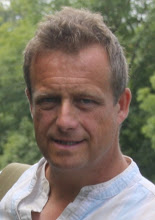
The Christmas snows came and went and then a few days ago it got a lot colder. I was out this morning in Llandrindod Wells, helping to hang an exhibition and looking at a medieval cellar for dry rot. The Radnor hills were white with a thin covering of wind-blown snow, the horizons fading into a leaden sky. But the valleys were snow-free and muddy, the colours vivid compared with the heavy greys and whites of the hills. Walking the quiet upper reaches of the Wye valley, the contrast was marked.









